Alex Hanson
Speedy Deformable 3D Gaussian Splatting: Fast Rendering and Compression of Dynamic Scenes
Jun 09, 2025Abstract:Recent extensions of 3D Gaussian Splatting (3DGS) to dynamic scenes achieve high-quality novel view synthesis by using neural networks to predict the time-varying deformation of each Gaussian. However, performing per-Gaussian neural inference at every frame poses a significant bottleneck, limiting rendering speed and increasing memory and compute requirements. In this paper, we present Speedy Deformable 3D Gaussian Splatting (SpeeDe3DGS), a general pipeline for accelerating the rendering speed of dynamic 3DGS and 4DGS representations by reducing neural inference through two complementary techniques. First, we propose a temporal sensitivity pruning score that identifies and removes Gaussians with low contribution to the dynamic scene reconstruction. We also introduce an annealing smooth pruning mechanism that improves pruning robustness in real-world scenes with imprecise camera poses. Second, we propose GroupFlow, a motion analysis technique that clusters Gaussians by trajectory similarity and predicts a single rigid transformation per group instead of separate deformations for each Gaussian. Together, our techniques accelerate rendering by $10.37\times$, reduce model size by $7.71\times$, and shorten training time by $2.71\times$ on the NeRF-DS dataset. SpeeDe3DGS also improves rendering speed by $4.20\times$ and $58.23\times$ on the D-NeRF and HyperNeRF vrig datasets. Our methods are modular and can be integrated into any deformable 3DGS or 4DGS framework.
Speedy-Splat: Fast 3D Gaussian Splatting with Sparse Pixels and Sparse Primitives
Nov 30, 2024Abstract:3D Gaussian Splatting (3D-GS) is a recent 3D scene reconstruction technique that enables real-time rendering of novel views by modeling scenes as parametric point clouds of differentiable 3D Gaussians. However, its rendering speed and model size still present bottlenecks, especially in resource-constrained settings. In this paper, we identify and address two key inefficiencies in 3D-GS, achieving substantial improvements in rendering speed, model size, and training time. First, we optimize the rendering pipeline to precisely localize Gaussians in the scene, boosting rendering speed without altering visual fidelity. Second, we introduce a novel pruning technique and integrate it into the training pipeline, significantly reducing model size and training time while further raising rendering speed. Our Speedy-Splat approach combines these techniques to accelerate average rendering speed by a drastic $6.71\times$ across scenes from the Mip-NeRF 360, Tanks & Temples, and Deep Blending datasets with $10.6\times$ fewer primitives than 3D-GS.
PUP 3D-GS: Principled Uncertainty Pruning for 3D Gaussian Splatting
Jun 14, 2024

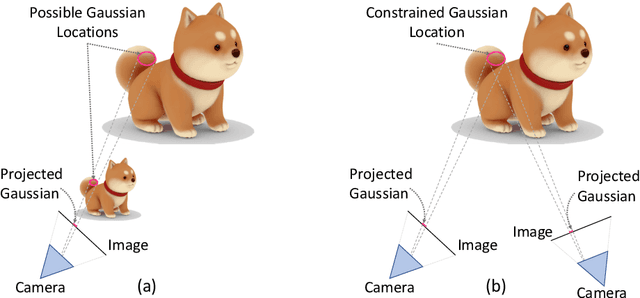
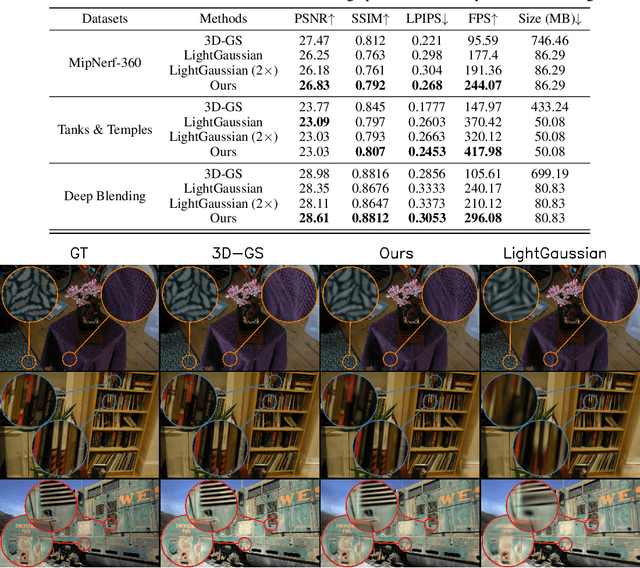
Abstract:Recent advancements in novel view synthesis have enabled real-time rendering speeds and high reconstruction accuracy. 3D Gaussian Splatting (3D-GS), a foundational point-based parametric 3D scene representation, models scenes as large sets of 3D Gaussians. Complex scenes can comprise of millions of Gaussians, amounting to large storage and memory requirements that limit the viability of 3D-GS on devices with limited resources. Current techniques for compressing these pretrained models by pruning Gaussians rely on combining heuristics to determine which ones to remove. In this paper, we propose a principled spatial sensitivity pruning score that outperforms these approaches. It is computed as a second-order approximation of the reconstruction error on the training views with respect to the spatial parameters of each Gaussian. Additionally, we propose a multi-round prune-refine pipeline that can be applied to any pretrained 3D-GS model without changing the training pipeline. After pruning 88.44% of the Gaussians, we observe that our PUP 3D-GS pipeline increases the average rendering speed of 3D-GS by 2.65$\times$ while retaining more salient foreground information and achieving higher image quality metrics than previous pruning techniques on scenes from the Mip-NeRF 360, Tanks & Temples, and Deep Blending datasets.
Intelligent Sight and Sound: A Chronic Cancer Pain Dataset
Apr 07, 2022
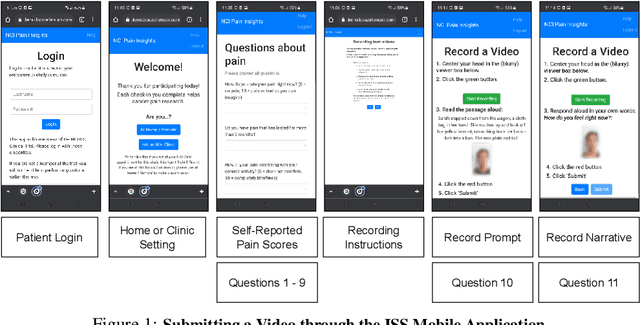
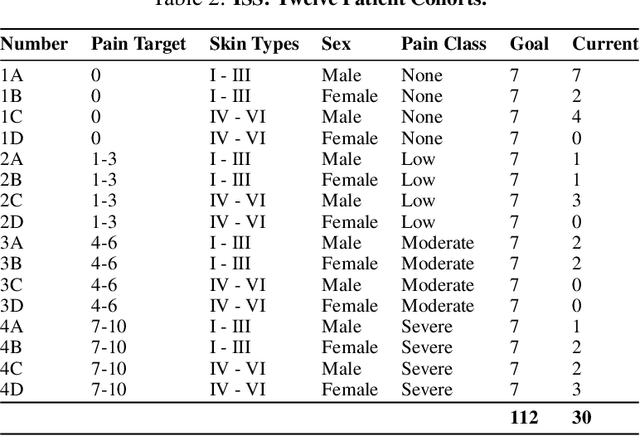

Abstract:Cancer patients experience high rates of chronic pain throughout the treatment process. Assessing pain for this patient population is a vital component of psychological and functional well-being, as it can cause a rapid deterioration of quality of life. Existing work in facial pain detection often have deficiencies in labeling or methodology that prevent them from being clinically relevant. This paper introduces the first chronic cancer pain dataset, collected as part of the Intelligent Sight and Sound (ISS) clinical trial, guided by clinicians to help ensure that model findings yield clinically relevant results. The data collected to date consists of 29 patients, 509 smartphone videos, 189,999 frames, and self-reported affective and activity pain scores adopted from the Brief Pain Inventory (BPI). Using static images and multi-modal data to predict self-reported pain levels, early models show significant gaps between current methods available to predict pain today, with room for improvement. Due to the especially sensitive nature of the inherent Personally Identifiable Information (PII) of facial images, the dataset will be released under the guidance and control of the National Institutes of Health (NIH).
Rethinking Common Assumptions to Mitigate Racial Bias in Face Recognition Datasets
Sep 08, 2021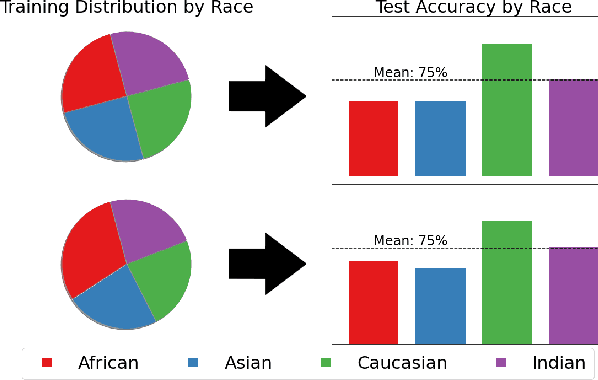

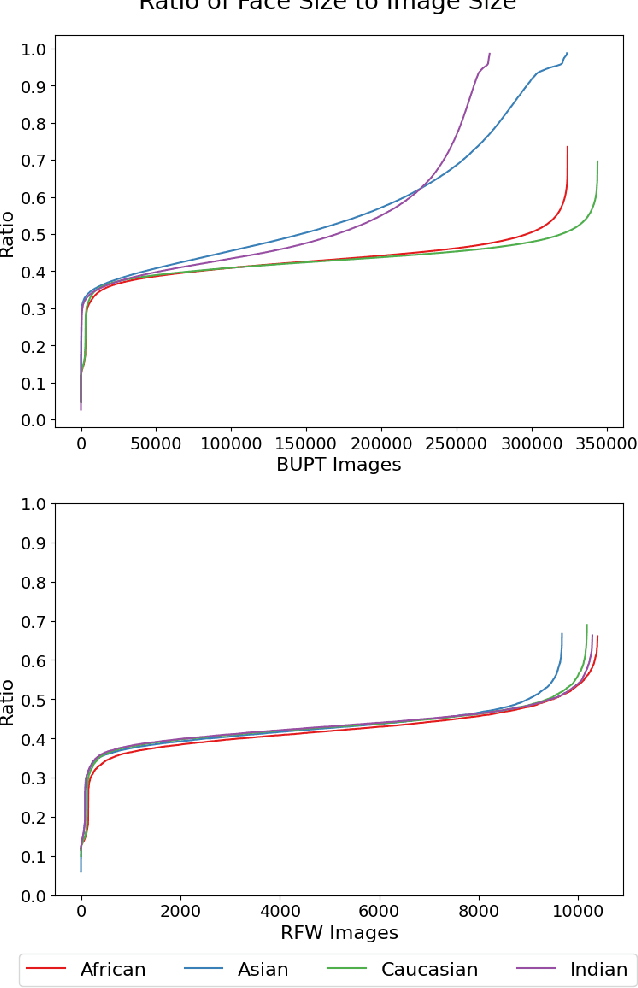
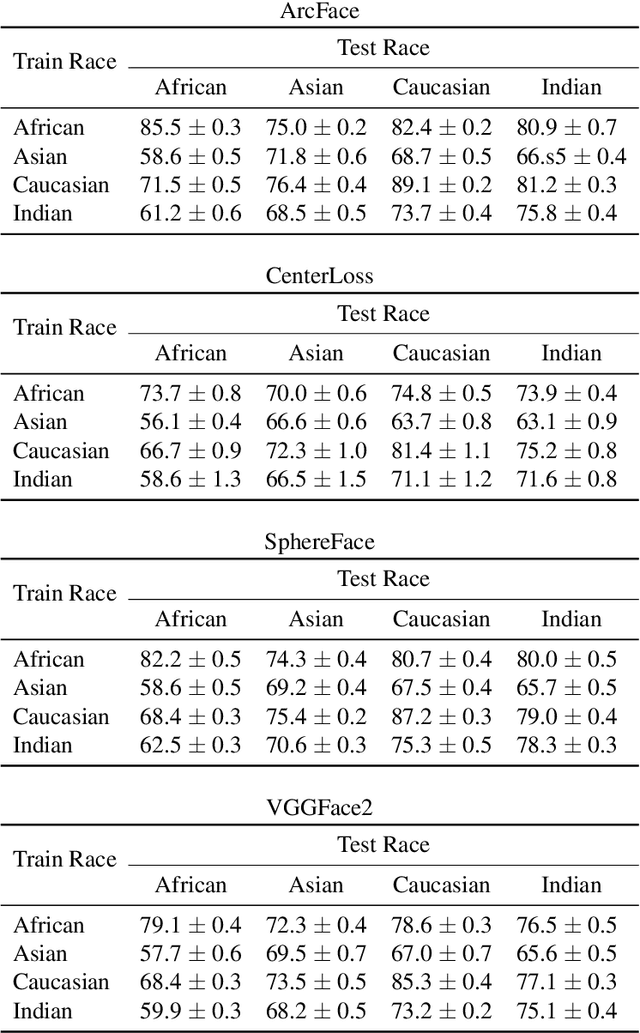
Abstract:Many existing works have made great strides towards reducing racial bias in face recognition. However, most of these methods attempt to rectify bias that manifests in models during training instead of directly addressing a major source of the bias, the dataset itself. Exceptions to this are BUPT-Balancedface/RFW and Fairface, but these works assume that primarily training on a single race or not racially balancing the dataset are inherently disadvantageous. We demonstrate that these assumptions are not necessarily valid. In our experiments, training on only African faces induced less bias than training on a balanced distribution of faces and distributions skewed to include more African faces produced more equitable models. We additionally notice that adding more images of existing identities to a dataset in place of adding new identities can lead to accuracy boosts across racial categories. Our code is available at https://github.com/j-alex-hanson/rethinking-race-face-datasets.
SVMax: A Feature Embedding Regularizer
Mar 04, 2021
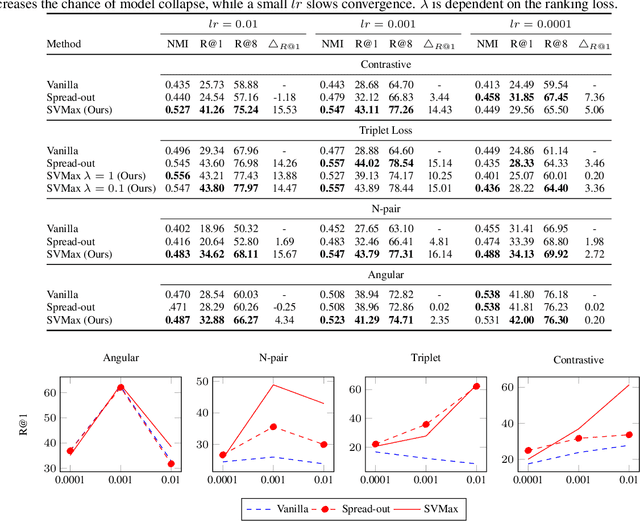
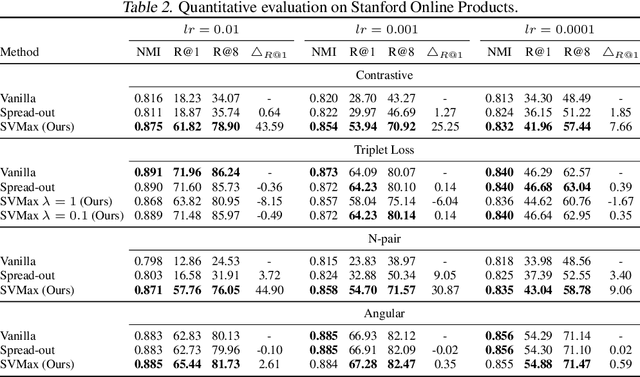
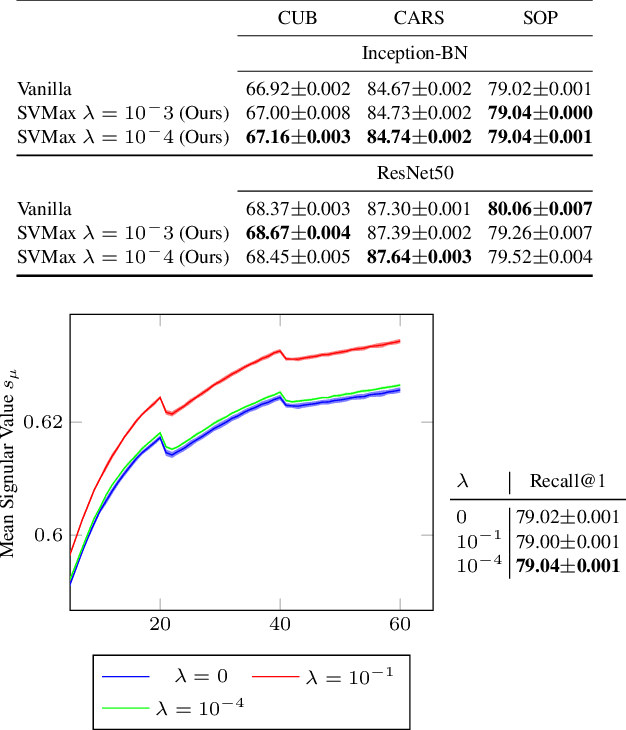
Abstract:A neural network regularizer (e.g., weight decay) boosts performance by explicitly penalizing the complexity of a network. In this paper, we penalize inferior network activations -- feature embeddings -- which in turn regularize the network's weights implicitly. We propose singular value maximization (SVMax) to learn a more uniform feature embedding. The SVMax regularizer supports both supervised and unsupervised learning. Our formulation mitigates model collapse and enables larger learning rates. We evaluate the SVMax regularizer using both retrieval and generative adversarial networks. We leverage a synthetic mixture of Gaussians dataset to evaluate SVMax in an unsupervised setting. For retrieval networks, SVMax achieves significant improvement margins across various ranking losses. Code available at https://bit.ly/3jNkgDt
 Add to Chrome
Add to Chrome Add to Firefox
Add to Firefox Add to Edge
Add to Edge